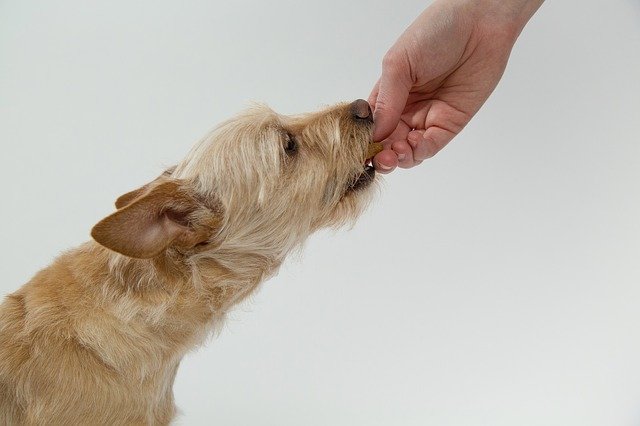Traveling with pets can be an enjoyable experience for both you and your furry companions. However, it requires careful planning and preparation to ensure your pets’ comfort, safety, and health throughout the journey. Choosing a reliable pet transportation service is key to hassle-free pet travel. This comprehensive guide provides tips and advice on traveling with pets to make every trip smooth sailing.

Preparing Your Pet for Travel
Proper preparation is crucial to reducing travel anxiety for your pet. Here are some tips to get them travel-ready:
Acclimate Them to Their Carrier or Crate
Pets feel more secure in enclosed spaces that smell familiar. Introduce the carrier and make it a safe zone by placing their bedding inside and encouraging regular use for naps and feedings. This gets them accustomed to it as a “den” rather than something to dread.
Conduct Test Drives
Take your pet on short car rides before the actual trip to get them used to motion and sounds. Start slow with distances and durations. Don’t force it if they seem overly anxious. Try adding their favorite toy or treat to create positive associations.
Update Vaccinations
Consult your vet about any necessary vaccines for the destination at least 2 weeks prior. This gives immunity time to build up. Regular flea, tick, and deworming treatments should also be up-to-date. Carry health records listing medications, conditions, etc.
Get an ID Tag
Identification helps reunite lost pets with their owners. The tag should include your name, mobile number, home address, and destination contact info. Microchipping is also advised for added security.
Pack Essentials
Carry food, medications, chew toys, treats, a towel, potty pads, and other calming, familiar items. Frozen water bottles avoid spills while hydrating pets. If crossing international borders, follow import regulations for pet food, etc.
Choosing Pet-Friendly Transport
You have options when transporting your beloved pets:
Drive Them Yourself
Driving allows you total control over elements like rest stops, temperatures, and pace of travel. It works for regional destinations. Long-haul road trips require diligent planning for pet needs.
Fly Them as Cargo
Most airlines accommodate pets either in-cabin or as air cargo. Cargo travel poses risks like extreme weather, delays, noise, and mishandling. Regulations for cage sizes, etc., also apply. Supervision is limited.
Hire a Pet Transportation Service
Specialized pet transportation provides door-to-door convenience under the care of trained handlers. Customized vehicles with temperature control and onboard water/feeding systems optimize comfort and safety. Some even have live tracking and flight/hotel booking. This personalized end-to-end service reduces hassles and anxieties considerably.
Ensuring a Smooth Ride
You play a big role in helping your pet enjoy the trip regardless of mode chosen. Here are some inflight and driving tips:
Accompany Them If Possible
Your presence soothes your pet. If flying, book a pet-friendly airline and reserve an in-cabin. If driving, secure the crate to limit sliding. Avoid leaving them unattended in vehicles.
Give Plenty of Potty/Exercise Breaks
Schedule regular stops for relieving themselves and stretching their legs. Have clean-up supplies handy. Long periods confined can cause anxiety.
Keep Them Calm
Bring along your favorite toys or treats for comfort. Use pheromone sprays and anxiety vests or medications as recommended by your vet. Offer affection and reassurance with verbal and tactile contact.
Maintain Familiar Routine
Feed meals, give medication, and sleep at similar times as at home for consistency. Cater to needs like darkness at bedtime.
Ensure Proper Ventilation & Avoid Temperature Extremes
Ensure air flow at all times. Never leave pets in parked vehicles. Young, old and snub-nosed pets are vulnerable to heat/cooling issues.
Use Caution Exiting Terminals/Vehicles
Apply a leash when opening cargo doors or taking carriers out of cars to prevent escapes. Travel is disorienting, so stay alert.
Arriving at Your Destination
You still need to take precautions for your pet’s well-being when you reach your destination:
Check Local Pet Policies
Many hotels allow pets, but some major chains have restrictions or extra fees. Shared rentals like Airbnb also vary. Research ahead of booking.
Scout Pet-Friendly Spots
Identify nearby green spaces, trails, and parks where your pet can relieve itself and get exercise. Ask if the accommodation has designated outdoor areas.
Request Ground Floor Rooms
You may need patio access for walks. Inform staff about pets to assign appropriate rooms/cabins—alert housekeeping for entry schedules.
Use Caution With Unfamiliar Areas
Pets can slip collars, eat local flora, or escape fences in new environments. Supervise them closely outdoors and keep ID current.
Maintain Health Safeguards
Follow your vet’s advice on vaccinations, preventives, avoiding stray/wild animals, deworming, etc. Monitor for any reactions to food/water changes.
Avoiding Hazards En Route
While travel broadens horizons, it also exposes pets to risks. Be vigilant regarding:
Escape Attempts
Use secured crates, harnesses, and leashes at all times during transit and when entering/exiting terminals or vehicles. Pets can slip away quickly in crowds.
Extreme Weather
Don’t subject pets to freezing cold or sweltering heat during airport tarmac holds, parked vehicles, or anywhere else. Carry water to prevent dehydration.
Illness Triggers
Motion sickness susceptibility varies. Clean messes immediately and consider medication. The stress of travel also lowers immunity, so watch for symptoms.
Traumatic Stress
Fear-induced behaviors like panting, whining, hiding, loss of bladder/bowel control, aggression, or self-harm need intervention. Consult your vet about calming aids.
Pet Theft
Stay vigilant in busy transportation hubs and destinations. Microchips help trace stolen pets. Keep identification current. Avoid leaving them alone when away from home.
Making Extended Stays Easier
For longer-term relocations or deployments, consider:
Securing Short-Term Care
Check local boarding facilities or hire pet sitters for multi-day absences. Ensure all health and feeding needs are shared.
Arranging Long-Term Care
If deployed overseas or moving abroad long-term, carefully research whether your pet can join you. If not, make arrangements for trusted family/friends or professional long-term boarding to care for them in your absence.
Consulting Relocation Specialists
For interstate/international moves, use specialized pet transportation services to coordinate logistics like customs paperwork, flight arrangements, ground transport, overnight boarding, etc. This lifts the hassle off your shoulders.
With careful prep and smart transport choices, your furry friends can share the adventure when you’re on the move. Invest in their comfort and safety, and the whole family will enjoy discovering new destinations together. Reliable pet transportation services ensure seamless pet relocation worldwide.
Travel Lover | Pet Mama | Beauty Junkie | Low Glycemic – Healthy Fats – Low Carb – Keto Inspired Food Enthusiast | Cocktails | Printables
I am a stay-at-home- mom, living in KY with my husband and children. I’m a travel and lifestyle blogger encouraging folks to live their life one adventure at a time while also focusing on beauty, essential oils and health. From time to time I also like to showcase my adorable pets along with my family. Along with Cinnamon Hollow I can be found at The Martin Family Adventure … read more







